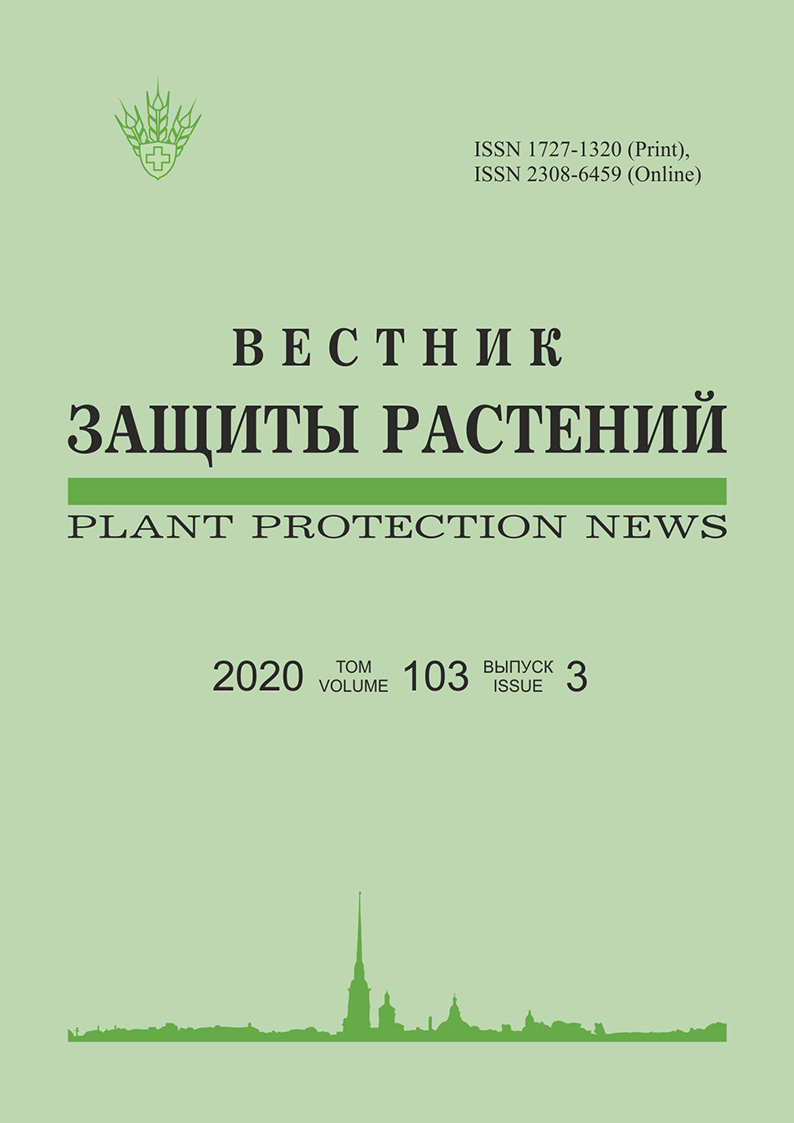Fungal pathogens of tomato in South-Western Russia (Krasnodar territory)
Keywords:
fungicides, tomato diseases, Fusarium equiseti, Phomopsis phaseoli, Chaetomium cochliodes, Clonostachys sp., Irpex lacteus, Alternaria solaniAbstract
During a study of fungal diseases of tomato in the South of Russia (Krasnodar Territory) 56 fungal isolates associated with tomato fruits were obtained. Most of them belonged to the species Alternaria alternata. Alternaria solani, Fusarium equiseti, Phomopsis phaseoli, Chaetomium cochliodes, Clonostachys sp., Irpex lacteus, Colletotrichum coccodes were also identified. Laboratory experiments revealed that Clonostachys sp., C. сochliodes, P. phaseoli, I. lacteus, and F. equiseti developed well on the fruit’s slices. Fusarium equiseti was the only species that can penetrate the tomato through epidermis and infect entire fruit. The most effective fungicide against F. equiseti was difenoconazole (EC50 = 0.08 mg/L); pencycuron was also effective (EC50 = 32.5 mg/L). Thiabendazole completely inhibited the growth of F. equiseti at the concentration 100 mg/L (EC50 = 47 mg/L).



